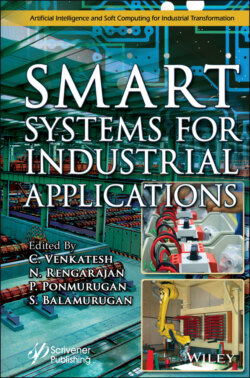Читать книгу Smart Systems for Industrial Applications - Группа авторов - Страница 23
1.3.2 The Adaptability of POCUS in Telemedicine
ОглавлениеThus, POCUS has enabled point-of-care screening to resource-limited communities. The screening is associated with cardiovascular diseases. Moreover, the scanning of 1,023 studies was done in a remote place whose images were sent to the physicians for review through internet-based platforms. The sending and reviewing process was completed with the median time of 11:44 h. This study has proved that the remote assessment of echocardiographic has an added value of using internet-based assessment for cardiac illnesses.
The interpretation of images from remote was tested in a smartphone. Around 83 patients images were sent to remote locations and tested in smartphone applications. It is observed that the non-expert diagnosis was revised by remote experts.
It is also possible to apply deep learning and machine learning in the analysis of echocardiography. It is shown that the algorithms like random forests and support vector machines could distinguish between hypertrophic cardiomyopathy and athlete heart more precisely than any traditional measures. Moreover, supervised learning approaches with the required number of ECG variables verified the superiority of machine learning algorithms by distinguishing between restrictive cardiomyopathy and constrictive pericarditis [17].
The usage of deep learning algorithms for image classification is very obvious. These kinds of applications are useful in computer vision. The algorithms can recognize the patterns in heterogeneous syndromes and cardiovascular images. The deep learning methods can improve the accuracy of 2D STE and other modalities of imaging [18, 19]. The idea can be extended to other imaging modalities, namely, 3D STE and cardiac image of magnetic resonance imaging kind. The deep learning algorithms work well even in noisy data, namely, strain imaging. The diseases like Takotsubo cardiomyopathy, hypertension, Brugada syndrome, heart failure, and atrial fibrillation can also be diagnosed with deep learning algorithms. An autonomous interpretation of echocardiography was successfully implemented through a deep learning algorithm by Zhang et al. [20]. Using the data collection of 14,000 samples, the algorithm could successfully distinguish between broad echocardiographic view classes (e.g., short axis and parasternal long axis) with an accuracy of 96%.
Automated quantification of cardiac structure with the help of Convolutional Neural Networks (CNNs) was superior to manual measurements. Moreover, authors have trained the CNN to detect pulmonary artery hypertension, cardiac amyloidosis, and hypertrophic cardiomyopathy with high accuracy. These evolutions prove that the idea of embedding AI techniques in mHealth devices has become a reality. Machine learning and deep learning techniques are an effective means of handling the sheer complexity of the data. While comparing with other disciplines, cardiologists have numerous amounts of data at their disposal. Since the data complexity grows, it is important for an AI technique to be embedded in the clinical practice. So, it is expected in the future that all cardiologists to be data scientists and physicians simultaneously.
The summary of the above discussed articles on AI-driven mHealth communication is listed in Table 1.3.
